by Naomi L. | May 20, 2015 | Blog, Creative Writing, Featured |
I love colors. I’ll say it over and over again: I love colors! They’re beautiful. They’re stimulating. Sometimes I even think they’re magical. I love everything about them, from the power they have to evoke emotions to the subtle yet distinct differences they make in a work of art. But my favorite thing about colors is their symbolism, the way they can be used to hide secrets and hint at details of a bigger picture without drawing focus away from the story at hand.
It’s simple enough to use colors in visual art, but what about in writing? Challenging as it may seem, I believe it is possible to create symbolism with words, such as when describing color schemes of character outfits and settings. Color symbolism has fascinated me for as long as I can remember, and while it would take an entire book (or series of books) to get into it all, I’d like to at least scratch the surface today with some of the basics I’ve picked up throughout my experience researching and implementing meaningful colors in my stories. You may want to consider these tips the next time you set a scene; they can help add a vivid new layer to your story! Enjoy!
 Red – Red is a bold and passionate color, often symbolizing such strong ideas and images as courage, fire, power, and violence. It’s a color that demands attention, which is why it’s commonly used to signify danger. Use red for passionate or aggressive characters, or for any sort of intense scene, whether it’s the heat of love or the violence of war.
Red – Red is a bold and passionate color, often symbolizing such strong ideas and images as courage, fire, power, and violence. It’s a color that demands attention, which is why it’s commonly used to signify danger. Use red for passionate or aggressive characters, or for any sort of intense scene, whether it’s the heat of love or the violence of war.
 Orange – Not quite passionate and not quite joyful, orange is a middle ground between red and yellow. It symbolizes energy and creativity, and is used in psychology to stimulate enthusiasm and determination. Use orange for adventurous or creative characters, or when you want to paint some vibrant warmth into a scene.
Orange – Not quite passionate and not quite joyful, orange is a middle ground between red and yellow. It symbolizes energy and creativity, and is used in psychology to stimulate enthusiasm and determination. Use orange for adventurous or creative characters, or when you want to paint some vibrant warmth into a scene.
 Yellow – Yellow is the two-sided coin of colors. On the one hand, it symbolizes happiness, optimism, sunshine, and friendship. On the other hand, it can also stand for cowardice, illness, hazard, and deceit. Golden shades represent wealth and luxury. Use yellow when you want to add hints of joy or caution to a scene. For the best effect, I recommend using yellow ambiguously, such as for characters who seem jubilant and optimistic on the outside but who are fearful or deceitful on the inside.
Yellow – Yellow is the two-sided coin of colors. On the one hand, it symbolizes happiness, optimism, sunshine, and friendship. On the other hand, it can also stand for cowardice, illness, hazard, and deceit. Golden shades represent wealth and luxury. Use yellow when you want to add hints of joy or caution to a scene. For the best effect, I recommend using yellow ambiguously, such as for characters who seem jubilant and optimistic on the outside but who are fearful or deceitful on the inside.
 Green – Think of green and you’re sure to picture beautiful scenes of nature, complete with lush vegetation as far as the eye can see. Indeed, green is the color of the environment, and it represents such ideas as youth, fertility, health, and rebirth. Abstractly, it also symbolizes jealousy and good luck. Use green for characters associated with natural themes such as environmentalism or the practice of healing, or to hint at fortune or envy in relationships.
Green – Think of green and you’re sure to picture beautiful scenes of nature, complete with lush vegetation as far as the eye can see. Indeed, green is the color of the environment, and it represents such ideas as youth, fertility, health, and rebirth. Abstractly, it also symbolizes jealousy and good luck. Use green for characters associated with natural themes such as environmentalism or the practice of healing, or to hint at fortune or envy in relationships.
 Blue – Blue is my favorite color because it represents all my favorite things. It’s a color that symbolizes intelligence, tranquility, trust, and loyalty. In nature, it’s associated with the sky and the sea, and different shades from turquoise to navy can be used to signify sophistication, knowledge, and integrity. Use blue for characters who are more intellectual than emotional, and for settings fitting an atmosphere of calm and authority.
Blue – Blue is my favorite color because it represents all my favorite things. It’s a color that symbolizes intelligence, tranquility, trust, and loyalty. In nature, it’s associated with the sky and the sea, and different shades from turquoise to navy can be used to signify sophistication, knowledge, and integrity. Use blue for characters who are more intellectual than emotional, and for settings fitting an atmosphere of calm and authority.
 Purple – Purple is the color of royalty, and has long represented such themes as nobility, wisdom, honor, and extravagance. Being a relatively rare color in nature, it is often associated with mystery and magic. Lighter shades such as lavender also convey grace and elegance. Use purple as a motif for regal or arrogant characters, mysterious settings, and storylines brimming with fantasy.
Purple – Purple is the color of royalty, and has long represented such themes as nobility, wisdom, honor, and extravagance. Being a relatively rare color in nature, it is often associated with mystery and magic. Lighter shades such as lavender also convey grace and elegance. Use purple as a motif for regal or arrogant characters, mysterious settings, and storylines brimming with fantasy.
 Pink – A soft complement to the bold red, pink is the color that most famously signifies love and romance. Strongly associated with femininity, it represents tenderness, caring, and acceptance. I myself tend to associate the color pink with flowers. Use pink to add a soothing or feminine quality to a scene, or to signify elements of a romantic subplot.
Pink – A soft complement to the bold red, pink is the color that most famously signifies love and romance. Strongly associated with femininity, it represents tenderness, caring, and acceptance. I myself tend to associate the color pink with flowers. Use pink to add a soothing or feminine quality to a scene, or to signify elements of a romantic subplot.
 Brown – Brown is well known as an earth tone, and as such tends to represent stability. Common ideas associated with the color brown include simplicity, comfort, and endurance. Use brown when you want to convey a sense of plainness or tenacity in a scene without having to resort to the blatant dullness of gray.
Brown – Brown is well known as an earth tone, and as such tends to represent stability. Common ideas associated with the color brown include simplicity, comfort, and endurance. Use brown when you want to convey a sense of plainness or tenacity in a scene without having to resort to the blatant dullness of gray.
 Gray – The dull middle ground between white and black, gray is most commonly associated with boredom and depression. On the positive side, it also stands for security, modesty, practicality, and reliability. Use gray for conservative characters or when you want to create a colorless air for a particular setting.
Gray – The dull middle ground between white and black, gray is most commonly associated with boredom and depression. On the positive side, it also stands for security, modesty, practicality, and reliability. Use gray for conservative characters or when you want to create a colorless air for a particular setting.
 White – White is the international color of peace, and is often regarded as a symbol of light, purity, and faith. Some even go as far as to associate it with perfection. Note that white takes on a different meaning in Eastern cultures, where it’s associated with death and mourning. Use white when you want to convey innocence in your characters and cleanliness in your settings, or when you want to create strong religious symbolism in your scenes.
White – White is the international color of peace, and is often regarded as a symbol of light, purity, and faith. Some even go as far as to associate it with perfection. Note that white takes on a different meaning in Eastern cultures, where it’s associated with death and mourning. Use white when you want to convey innocence in your characters and cleanliness in your settings, or when you want to create strong religious symbolism in your scenes.
 Black – The exact opposite of white, black represents everything that its counterpart doesn’t. Darkness, evil, and death are themes commonly associated with black, but it can also stand for austerity, formality, style, and sexuality. Arguably the most powerful color of all, black has a long history of symbolizing strongly opposed ideas on the spectrum of good and evil. Use black to convey depth in your characters or to add dark themes to a scene. For best results, combine it with other colors to create interesting contrasts of ideas in your stories.
Black – The exact opposite of white, black represents everything that its counterpart doesn’t. Darkness, evil, and death are themes commonly associated with black, but it can also stand for austerity, formality, style, and sexuality. Arguably the most powerful color of all, black has a long history of symbolizing strongly opposed ideas on the spectrum of good and evil. Use black to convey depth in your characters or to add dark themes to a scene. For best results, combine it with other colors to create interesting contrasts of ideas in your stories.
I hope you’ve enjoyed exploring the symbolism of color with me, and that you’ve picked up a few hints along the way! Have fun experimenting with the colors in your stories! Good luck, and thanks for reading!
Do you use color symbolism in your stories? Which colors are your favorites?
References and Further Reading
by Naomi L. | May 13, 2015 | Blog, Creative Writing, What If? Writing Prompts |
To keep up with my creative writing, I’m sharing a new set of “What If?” Writing Prompts for you to enjoy. This week’s post features another batch of prompts in the paranormal genre. See what sorts of mysterious stories you can write based on these ideas! Have fun!
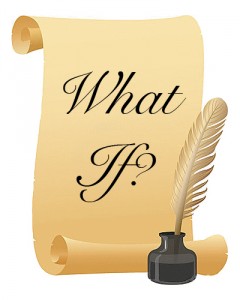 What if… the two-hundred-year-old ghost of a former resident were haunting your house?
What if… the two-hundred-year-old ghost of a former resident were haunting your house?
What if… you lived alone, but kept finding notes scribbled on your bathroom mirror whenever you took a shower?
What if… you had a mirror in which you could see the future?
What if… you could telekinetically manipulate objects based on your emotions?
What if… you held a seance for a departed loved one… that went horribly wrong?
Good luck spinning your own paranormal tales!
If you have any “What If?” writing prompt suggestions (for any theme), please feel free to share them in the comments below. Ideas I like may be featured in future “What If?” posts, with full credit and a link to your blog (if you have one)! Also, if you’ve written a piece based on an idea you’ve found here, be sure to link back to the respective “What If?” post. I would love to see what you’ve done with the prompt! Thank you!
by Naomi L. | May 6, 2015 | Blog, Creative Writing |
When it comes to writing romance, I tend to draw a lot from personal knowledge and experience. Though I have lived a few interesting stories of my own, the truth is that I learned most of what I know about love from my parents. They’ve been my inspiration for as long as I can remember, and they’re the reason I have so much faith in love today. My love stories feature healthy relationships and happy endings because that’s the reality I grew up witnessing every single day.
So what are the secrets to writing a love that’s true? Here are a few tips I learned from my parents that I love to implement as much in my stories as in my personal life. I hope you can learn some valuable lessons from them too! Enjoy!
1) The best kind of love blossoms from friendship.
 Anyone who has read at least a few of my romantic stories has no doubt noticed that most of the love I write grows between characters who start out as friends. My parents met well before they got together, and I think the reason they get along so well today is because they’ve known from the very beginning that they have enough in common to make things work. Not too much, of course, but that’s where the next piece of advice comes in…
Anyone who has read at least a few of my romantic stories has no doubt noticed that most of the love I write grows between characters who start out as friends. My parents met well before they got together, and I think the reason they get along so well today is because they’ve known from the very beginning that they have enough in common to make things work. Not too much, of course, but that’s where the next piece of advice comes in…
2) The key to everlasting love is mutual respect.
As alike as they seem sometimes, my parents are two very different people. My mom is soft-spoken and attentive, while my dad is loud and passionate. The key to their successful relationship is that they never try to impose elements of their personalities on each other, but rather appreciate each other’s strengths and accept their differences as the dynamic that keeps their marriage interesting. In other words, they avoid making that common married-couple mistake of trying to change each other. Not that they don’t learn from one another, of course, but when they do, it’s thanks to their intelligence and willingness to each be the best spouse the other deserves, which makes for a much healthier kind of relationship. They’ve become better people together not because they felt obligated to, but because they wanted to.
3) It’s important that you make each other laugh. Always.
When I think back on all the times I’ve noticed my parents interacting, I realize that I’ve heard them laugh much more often than I’ve heard them argue. Even when I’d overhear them getting upset about something, it would never take too long for one of them to say something silly that would start them both laughing about the whole thing. And I’m certain that’s what’s kept them together to this day. If I’ve learned anything from observing my parents’ relationship my whole life, it’s that love is only worth holding onto if it brings you much greater joy than sorrow. This may be the most important piece of advice my dad ever gave us: if you’re not laughing anymore, it’s time to jump ship.
4) Marry someone you love talking to.
Something else I’ve always noticed about my parents’ relationship is that they talk to each other about almost everything. Maybe it’s because they have similar yet distinct ways of thinking, so they’re usually interested in what the other has to say. Occasional difficulties in listening aside (mostly on my father’s part), my mom and dad have always been on the same page when it comes to communication. Of course, this made it nearly impossible for me and my sisters to get away with anything, but that just helped us to grow up as well-disciplined and happy children. That’s another important lesson we learned from our parents: to maintain a healthy relationship, communication is a must.
5) Learn to let the little things go and just enjoy life!
 This advice technically applies to anyone, but it’s especially important for committed couples. If you and your significant other get hung up on every little thing in your relationship that upsets you, you’re eventually going to drive each other crazy. That’s why my mom and dad never get stuck on minor issues for very long. When it comes to their arguments, they’re more about the “forgive and forget” philosophy, because they know that in the long run, those little spats are not worth stressing over. Instead, they focus on the important things, they support each other through thick and thin, and they make the most of each other’s company to just enjoy life. Can you really imagine a more perfect love than that?
This advice technically applies to anyone, but it’s especially important for committed couples. If you and your significant other get hung up on every little thing in your relationship that upsets you, you’re eventually going to drive each other crazy. That’s why my mom and dad never get stuck on minor issues for very long. When it comes to their arguments, they’re more about the “forgive and forget” philosophy, because they know that in the long run, those little spats are not worth stressing over. Instead, they focus on the important things, they support each other through thick and thin, and they make the most of each other’s company to just enjoy life. Can you really imagine a more perfect love than that?
These are the lessons about love that I’ve learned from my parents, and I’m grateful to them every day for the example they’ve set for my sisters and me. I only hope to experience a love like theirs throughout my life, but for now, I’ll keep using it as inspiration for my romantic fiction, as I hope you can too. Good luck! Thanks for reading!
Dedicated to my parents, the happiest couple I know. Thank you for teaching me what true love really is. Happy Anniversary, Mom and Dad! I love you!
by Naomi L. | April 29, 2015 | Blog, Creative Writing, Writer's Toolkit |
Remember that Grammarly quiz I shared last month in celebration of Grammar Day? Well, around the same time, the good people over at Grammarly offered me a free trial of their grammar checker as a gift for the occasion! Naturally, it was the perfect opportunity to try it out and write a review on it for my Writer’s Toolkit segment. After all, even the best writers need a little help checking their spelling and grammar, right?
So without further ado, here is my review of the Grammarly grammar checker. Enjoy!

About Grammarly
Grammarly, or the Grammarly®Editor, is a spelling and grammar checker that automatically proofreads text in English. According to the site’s product page, Grammarly “corrects contextual spelling mistakes, checks for more than 250 common grammar errors, enhances vocabulary usage, and suggests citations”. Aside from its primary function as a proofreader, the editor also features a thesaurus that suggests improvements on word choice and a plagiarism checker that compares text with over 8 billion pages on the Web.
Grammarly offers a few features for free, such as the quick grammar checker on their home page and the Google Chrome plugin that automatically checks any text you type in your browser. The full version can be accessed via premium subscriptions of $29.95/month, $59.95/quarter ($19.98/month), or $139.95/year ($11.66/month).
My free trial of Grammarly lasted for one month, during which time I used it to proofread my stories and blog posts. I also installed the Grammarly plugin on my Google Chrome browser, which for the purposes of this review is considered an extension of the full proofreader on the Grammarly website. Since I work on a Mac, I was not able to test the Microsoft Office add-in.
Pros
The first thing I noticed when I started using the Grammarly proofreader is that it doubles as a teacher. When the editor catches an error, it doesn’t just tell you that it’s wrong; it tells you why it’s wrong. This is immensely useful for learning about mistakes you didn’t even know you were making so you can avoid making them again. I’ve already learned a couple of grammar rules myself! Explanations include examples of correct and incorrect uses, and a fun little bonus is the score in the bottom right corner that evaluates how grammatically correct your text is overall. It’s like having your own private grammar tutor!
Another handy feature is the vocabulary enhancement thesaurus. The editor flags words it finds too common or repetitive and suggests replacements that may improve the quality of the text. It can also check a document against pages across the Internet to identify possible plagiarism, and while I confess that I only tested this a few times, it seems to work fairly well. Both of these features can be toggled on and off, which makes them optional additions to an already powerful proofreading tool. And yet another bonus is the preset configuration list for types of documents ranging from formal to creative writing, so you can actually teach the editor what sorts of errors you want it to focus on when proofreading your text!
The Google Chrome plugin also deserves an honorable mention, as it brings all of Grammarly’s features to any web page on which you write. When you type into a text box, an icon appears in the corner and automatically updates a number to indicate how many errors are being detected as you type. Hovering over this icon will open a small tab that shows you how many advanced and critical errors are in your text at the moment, and clicking in this tab or on the explanations that appear when you hover over underlined errors will open the Grammarly editor directly on the page, so you can edit your text without having to navigate away. It even seems to learn your writing style the longer you use it. That’s pretty neat!
Cons
It’s worth noting at this point that the gentleman who set me up with my free trial of Grammarly mentioned its usefulness as more of a “second set of eyes” as opposed to a replacement for a professional proofreader. After trying it out a few times, I quickly realized what he meant. The proofreader points out whatever it believes may be an error, but it can’t always take the full context of the document into account. Sometimes it incorrectly marks an alternative grammar choice as an error, and other times it misreads the context and lets a mistake slide. This issue was already thoroughly covered in a review by Grammarist, so I won’t go into detail here. In all fairness, that article was written over three years ago, during which time Grammarly does seem to have improved on its shortcomings, but it still can’t fully compensate for the judgment of a human being. Grammarly is good for catching errors you missed yourself, but if you need to proofread a whole book, your best bet is to hire an editor.
Perhaps the biggest drawback I noticed while testing Grammarly is that it isn’t entirely relevant to my style of writing. This isn’t necessarily a con, per se; more of an observation of how the editor seems to be specifically geared toward strictly formal composition. Most of the documents I pasted into Grammarly were short stories, and while the proofreader was right to catch many of my supposed errors (even when set to “Creative – Short Story”), over 90% of them were left untouched due to being creative choices on my part as opposed to actual mistakes (e.g. character dialogue or first-person narrative intended to sound “real”). Perhaps this is more of a testament to the perfectionist editor in me than to Grammarly’s limited usefulness, but I still think it’s worth mentioning for the benefit of writers as meticulous about grammar as me. If you know exactly what mistakes you’re making, you don’t need to pay for an automatic proofreader to tell you the same thing.
I should also mention that I do much of my writing on an iPad, and though I was able to use Grammarly well on my laptop, I couldn’t access it at all through my mobile device due to incompatibility issues. I can’t say if the editor works on non-iOS devices because I don’t own one, so this is mostly a note of caution to Apple users, but it may apply to anyone who frequently writes on a smartphone or tablet. Until Grammarly comes out with a mobile app, you’ll have to make due with your device’s built-in spell checker.
Summary
Pros
- Grammatical error corrections with explanations
- More thorough than standard word processor spelling and grammar checkers
- Built-in thesaurus for vocabulary enhancement
- Plagiarism checker
- Settings for different types of documents
- Google Chrome plugin for universal use
Cons
- More useful for formal writing than creative writing
- Misses some grammatical errors
- Incorrectly marks some alternative grammar choices as mistakes
- Incompatible with mobile devices
Conclusion
Is Grammarly worth your money? I’d say that depends on three factors: what you write, how often you write, and how proficient you are at editing on your own. If you’re constantly typing up formal documents, articles and emails that require impeccable spelling and grammar, a premium subscription to Grammarly may be just what you need. If, however, most of your writing consists of poetry or stories that experiment heavily with form and style, then a standard free grammar checker may suffice. Use your discretion when deciding how much help you really need to edit your work.
Based on my brief experience with it, Grammarly certainly seems to warrant the respect it gets, and though I may not need it now while my writing is concentrated in the experimental short story format, I may consider attaining a full subscription for future proofreading of my novels and academic papers (both of which are included in the aforementioned preset list). In any case, Grammarly has certainly gained this writer’s attention, and I believe it deserves the attention of any writer looking for a better automated editor than what the standard word processor has to offer. To paraphrase the famous proverb, your grammar is only as strong as your weakest misplaced comma.
Bonus: I used Grammarly to proofread the first draft of this blog post. Before editing and after including vocabulary and plagiarism checking, it came out to 35 critical issues and a score of 91 out of 100. Thanks, Grammarly!
Today’s creative writing post is brought to you by Grammarly, the World’s Best Grammar Checker. I was not compensated for this review. All opinions expressed here are my own. For more information on Grammarly, visit http://www.grammarly.com/grammar-check. Thanks for reading! Happy writing!
by Naomi L. | April 22, 2015 | Blog, Creative Writing, What If? Writing Prompts |
It’s Earth Day, and that means it’s the perfect time to appreciate the wonder that is our natural world. And what better way for writers to get into the spirit of the day than with some nature-themed “What If?” Writing Prompts? In celebration of our beautiful Earth, here’s a fresh batch of prompts for you, the first in this segment set to the theme of nature. Enjoy, and Happy Earth Day!
 What if… every single human in the world suddenly disappeared?
What if… every single human in the world suddenly disappeared?
(Source: AsapSCIENCE video – “What If Humans Disappeared?“)
What if… there were a superhero among wild animals who fought against the destruction of their habitat?
What if… the trees in deforested areas could talk?
What if… everyone in the world accepted that climate change is a real and ongoing threat to life as we know it?
What if… all of humanity made an effort to protect the environment and preserve the natural wonders of our Earth?
Have fun writing your own stories about nature and the Earth!
If you have any “What If?” writing prompt suggestions (for any theme), please feel free to share them in the comments below. Ideas I like may be featured in future “What If?” posts, with full credit and a link to your blog (if you have one)! Also, if you’ve written a piece based on an idea you’ve found here, be sure to link back to the respective “What If?” post. I would love to see what you’ve done with the prompt! Thank you!
by Naomi L. | April 15, 2015 | Blog, Creative Writing |
Back to the subject of art and science! Since starting a discussion on this topic last month, I’ve already talked about the reading and writing aspects of the comparison between art and science. Now I’m inspired to get into another topic that has held my interest for as long as I can remember: research. How do these two sides compare when it comes to looking things up?
How the Art is like the Science
Research is a technique that every serious writer must master, regardless of medium. Scientists need to acquire purely factual information to form a solid foundation of credibility for their studies and continuously guide their work toward new discoveries. Journalists have to be aware of all the facts of a story in order to accurately convey the news to their readers/viewers. Even fiction writers and poets draw ideas from real life to paint a vivid image with the details in their stories and poetry. No matter what we choose to write, we should always do at least a little research to make our work believable, and that’s why the best writers do well to keep reference books, articles, and search engines handy at all times.
What makes most literature relatable is that no matter how fantastic the details may be, there’s always some base of truth with which the reader can connect, whether it’s the spectrum of emotions shown by fictional characters or world news that directly or indirectly affects us. As writers, it’s up to us to curate the ideas we want to share with our audience and present them in a way that makes our writing fresh and interesting, for fiction and non-fiction alike.
Research is a universal term for looking up information that we can put to good use. The differences, however, lie in the purposes of this practice…
How the Art is unlike the Science
Artistic writing is widely popular as an escape from reality for the fascinating stories one can only find in fiction. That being said, a writer can’t expect for more than a handful of readers to enjoy their work unless they can somehow bridge the gap between the fictional world of their stories and the real world of their audience. This is where research plays a key role. Writers of historical fiction have to know as many specific details as possible of the past events around which they construct their tales. Science fiction writers should have at least a basic understanding of real scientific principles before attempting to pass their stories off as even remotely plausible. Murder mysteries and thrillers rely on plots that could happen in real life in order to achieve their full effect, and romance novelists need to understand human nature and relationships if they want to make their characters relatable. Research is important for all forms of artistic writing, and fiction writers who master it will find their craft all the more enriching for it.
Scientific writing, on the other hand, thrives on research taken to a whole other level. While research for writing may be optional for many artists, it is unequivocally mandatory for scientists. Not only are we expected to read everything related to our field of interest, but we have to do so before we even think about writing our own work! If I learned anything from my first years as a Biology student, it’s that you can’t expect to make it in the scientific community unless you’re constantly reading. Academic papers, books, news articles, any source of information relevant to your studies can and should be perused. Science is all about the progression of knowledge, and in the modern age of the Internet, new information is emerging faster than ever: every week, in fact, if not every single day. In short, research is an enhancement that artists choose to pursue, but lack of research is a hindrance that scientists cannot afford.
Like many aspects of writing, research is something of an art and a science itself. It may not be easy for every writer to acquire the habit, but once you get the hang of it, you’ll find that research is an invaluable practice that will help you connect with your readers and elevate your writing to wonderful new heights. Best of luck! Thanks for reading!
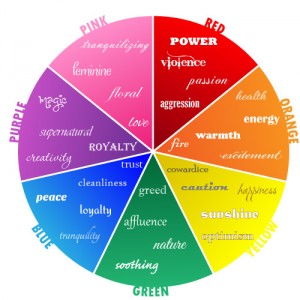
 Red – Red is a bold and passionate color, often symbolizing such strong ideas and images as courage, fire, power, and violence. It’s a color that demands attention, which is why it’s commonly used to signify danger. Use red for passionate or aggressive characters, or for any sort of intense scene, whether it’s the heat of love or the violence of war.
Red – Red is a bold and passionate color, often symbolizing such strong ideas and images as courage, fire, power, and violence. It’s a color that demands attention, which is why it’s commonly used to signify danger. Use red for passionate or aggressive characters, or for any sort of intense scene, whether it’s the heat of love or the violence of war. Orange – Not quite passionate and not quite joyful, orange is a middle ground between red and yellow. It symbolizes energy and creativity, and is used in psychology to stimulate enthusiasm and determination. Use orange for adventurous or creative characters, or when you want to paint some vibrant warmth into a scene.
Orange – Not quite passionate and not quite joyful, orange is a middle ground between red and yellow. It symbolizes energy and creativity, and is used in psychology to stimulate enthusiasm and determination. Use orange for adventurous or creative characters, or when you want to paint some vibrant warmth into a scene. Yellow – Yellow is the two-sided coin of colors. On the one hand, it symbolizes happiness, optimism, sunshine, and friendship. On the other hand, it can also stand for cowardice, illness, hazard, and deceit. Golden shades represent wealth and luxury. Use yellow when you want to add hints of joy or caution to a scene. For the best effect, I recommend using yellow ambiguously, such as for characters who seem jubilant and optimistic on the outside but who are fearful or deceitful on the inside.
Yellow – Yellow is the two-sided coin of colors. On the one hand, it symbolizes happiness, optimism, sunshine, and friendship. On the other hand, it can also stand for cowardice, illness, hazard, and deceit. Golden shades represent wealth and luxury. Use yellow when you want to add hints of joy or caution to a scene. For the best effect, I recommend using yellow ambiguously, such as for characters who seem jubilant and optimistic on the outside but who are fearful or deceitful on the inside. Green – Think of green and you’re sure to picture beautiful scenes of nature, complete with lush vegetation as far as the eye can see. Indeed, green is the color of the environment, and it represents such ideas as youth, fertility, health, and rebirth. Abstractly, it also symbolizes jealousy and good luck. Use green for characters associated with natural themes such as environmentalism or the practice of healing, or to hint at fortune or envy in relationships.
Green – Think of green and you’re sure to picture beautiful scenes of nature, complete with lush vegetation as far as the eye can see. Indeed, green is the color of the environment, and it represents such ideas as youth, fertility, health, and rebirth. Abstractly, it also symbolizes jealousy and good luck. Use green for characters associated with natural themes such as environmentalism or the practice of healing, or to hint at fortune or envy in relationships. Blue – Blue is my favorite color because it represents all my favorite things. It’s a color that symbolizes intelligence, tranquility, trust, and loyalty. In nature, it’s associated with the sky and the sea, and different shades from turquoise to navy can be used to signify sophistication, knowledge, and integrity. Use blue for characters who are more intellectual than emotional, and for settings fitting an atmosphere of calm and authority.
Blue – Blue is my favorite color because it represents all my favorite things. It’s a color that symbolizes intelligence, tranquility, trust, and loyalty. In nature, it’s associated with the sky and the sea, and different shades from turquoise to navy can be used to signify sophistication, knowledge, and integrity. Use blue for characters who are more intellectual than emotional, and for settings fitting an atmosphere of calm and authority. Purple – Purple is the color of royalty, and has long represented such themes as nobility, wisdom, honor, and extravagance. Being a relatively rare color in nature, it is often associated with mystery and magic. Lighter shades such as lavender also convey grace and elegance. Use purple as a motif for regal or arrogant characters, mysterious settings, and storylines brimming with fantasy.
Purple – Purple is the color of royalty, and has long represented such themes as nobility, wisdom, honor, and extravagance. Being a relatively rare color in nature, it is often associated with mystery and magic. Lighter shades such as lavender also convey grace and elegance. Use purple as a motif for regal or arrogant characters, mysterious settings, and storylines brimming with fantasy. Pink – A soft complement to the bold red, pink is the color that most famously signifies love and romance. Strongly associated with femininity, it represents tenderness, caring, and acceptance. I myself tend to associate the color pink with flowers. Use pink to add a soothing or feminine quality to a scene, or to signify elements of a romantic subplot.
Pink – A soft complement to the bold red, pink is the color that most famously signifies love and romance. Strongly associated with femininity, it represents tenderness, caring, and acceptance. I myself tend to associate the color pink with flowers. Use pink to add a soothing or feminine quality to a scene, or to signify elements of a romantic subplot. Brown – Brown is well known as an earth tone, and as such tends to represent stability. Common ideas associated with the color brown include simplicity, comfort, and endurance. Use brown when you want to convey a sense of plainness or tenacity in a scene without having to resort to the blatant dullness of gray.
Brown – Brown is well known as an earth tone, and as such tends to represent stability. Common ideas associated with the color brown include simplicity, comfort, and endurance. Use brown when you want to convey a sense of plainness or tenacity in a scene without having to resort to the blatant dullness of gray. Gray – The dull middle ground between white and black, gray is most commonly associated with boredom and depression. On the positive side, it also stands for security, modesty, practicality, and reliability. Use gray for conservative characters or when you want to create a colorless air for a particular setting.
Gray – The dull middle ground between white and black, gray is most commonly associated with boredom and depression. On the positive side, it also stands for security, modesty, practicality, and reliability. Use gray for conservative characters or when you want to create a colorless air for a particular setting. White – White is the international color of peace, and is often regarded as a symbol of light, purity, and faith. Some even go as far as to associate it with perfection. Note that white takes on a different meaning in Eastern cultures, where it’s associated with death and mourning. Use white when you want to convey innocence in your characters and cleanliness in your settings, or when you want to create strong religious symbolism in your scenes.
White – White is the international color of peace, and is often regarded as a symbol of light, purity, and faith. Some even go as far as to associate it with perfection. Note that white takes on a different meaning in Eastern cultures, where it’s associated with death and mourning. Use white when you want to convey innocence in your characters and cleanliness in your settings, or when you want to create strong religious symbolism in your scenes. Black – The exact opposite of white, black represents everything that its counterpart doesn’t. Darkness, evil, and death are themes commonly associated with black, but it can also stand for austerity, formality, style, and sexuality. Arguably the most powerful color of all, black has a long history of symbolizing strongly opposed ideas on the spectrum of good and evil. Use black to convey depth in your characters or to add dark themes to a scene. For best results, combine it with other colors to create interesting contrasts of ideas in your stories.
Black – The exact opposite of white, black represents everything that its counterpart doesn’t. Darkness, evil, and death are themes commonly associated with black, but it can also stand for austerity, formality, style, and sexuality. Arguably the most powerful color of all, black has a long history of symbolizing strongly opposed ideas on the spectrum of good and evil. Use black to convey depth in your characters or to add dark themes to a scene. For best results, combine it with other colors to create interesting contrasts of ideas in your stories.
 What if… the two-hundred-year-old ghost of a former resident were haunting your house?
What if… the two-hundred-year-old ghost of a former resident were haunting your house? Anyone who has read at least a few of my romantic stories has no doubt noticed that most of the love I write grows between characters who start out as friends. My parents met well before they got together, and I think the reason they get along so well today is because they’ve known from the very beginning that they have enough in common to make things work. Not too much, of course, but that’s where the next piece of advice comes in…
Anyone who has read at least a few of my romantic stories has no doubt noticed that most of the love I write grows between characters who start out as friends. My parents met well before they got together, and I think the reason they get along so well today is because they’ve known from the very beginning that they have enough in common to make things work. Not too much, of course, but that’s where the next piece of advice comes in… This advice technically applies to anyone, but it’s especially important for committed couples. If you and your significant other get hung up on every little thing in your relationship that upsets you, you’re eventually going to drive each other crazy. That’s why my mom and dad never get stuck on minor issues for very long. When it comes to their arguments, they’re more about the “forgive and forget” philosophy, because they know that in the long run, those little spats are not worth stressing over. Instead, they focus on the important things, they support each other through thick and thin, and they make the most of each other’s company to just enjoy life. Can you really imagine a more perfect love than that?
This advice technically applies to anyone, but it’s especially important for committed couples. If you and your significant other get hung up on every little thing in your relationship that upsets you, you’re eventually going to drive each other crazy. That’s why my mom and dad never get stuck on minor issues for very long. When it comes to their arguments, they’re more about the “forgive and forget” philosophy, because they know that in the long run, those little spats are not worth stressing over. Instead, they focus on the important things, they support each other through thick and thin, and they make the most of each other’s company to just enjoy life. Can you really imagine a more perfect love than that?
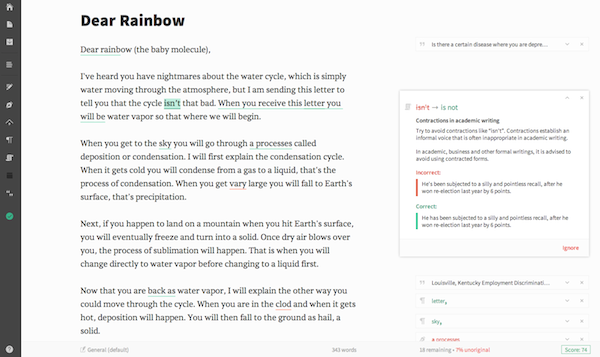
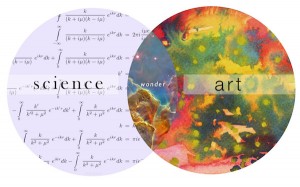
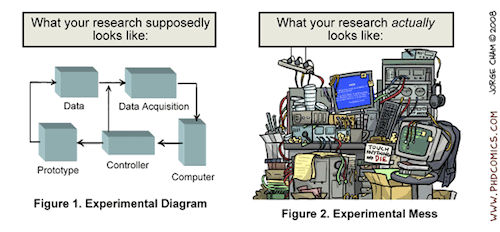

Recent Comments